The initial call to the property was for a squirrel that had accessed the attic of a tall house through the second-story eaves, or drip edge. The squirrel had done a great deal of damage but the house itself was also old and the roof had not been taken care of properly. Rooves are not just a rain cover, they are a structure that takes care of your home. Without it, you will experience erratic temperatures, roof leaks from rain, and animals getting into your attic easily. So if your roof is getting as old as twenty years it’s time to think about getting it replaced. If you don’t then you may end up with wildlife in your attic and a bill for removal that could have been spent on a new roof.
Call Squirrel Control today for a free quote over the phone!
Exterior Inspection
The initial inspection of the exterior revealed many openings around the front of the roof that could be accessed by both small animals like squirrels and birds and larger ones like raccoons. The damage was not only from animals but from age, rain, rot, and rust. The roof was in a terrible state and needed a great deal of exclusion. Exclusion is a process of sealing off entryways that animals have or can use. When doing this, even if you think there is nothing in there, for safety the technician must always install a one-way door just in case an animal is still in the attic. Because of the height of the house, a second safety technician is required to assist on the roof and help the technician get up to the high roof. This is required by all commercial insurance companies.
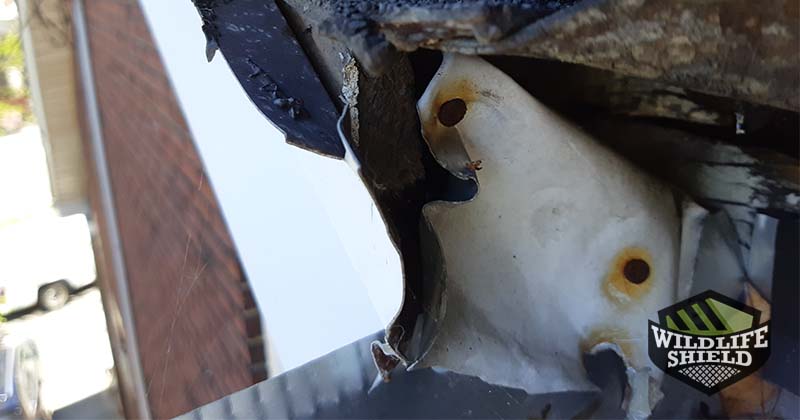
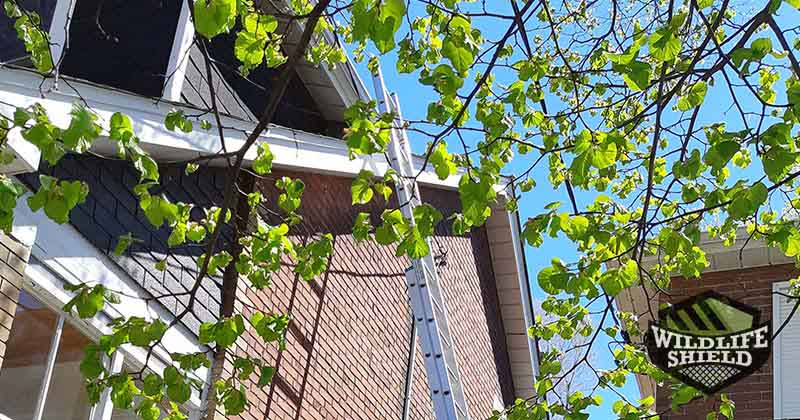
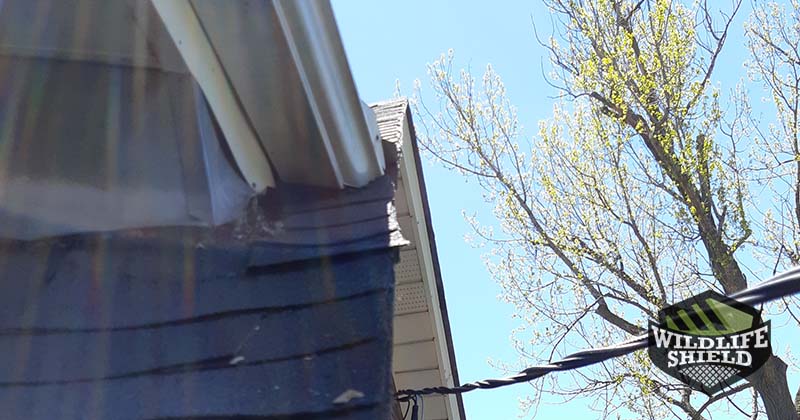
Initial Measures
The initial measures taken by the technician included inspecting the roof for openings that animals could access and creating exclusion solutions to complex openings. The technician must seal a large amount of drip edge, as much as nine or ten feet, and must also seal off roof vents. Roof vents are often made of plastic and can be chewed through by squirrels who are in truth rodents. They have ever-growing incisors that can tear through aluminum, brick, and concrete as well as plastic and wood. They can also cause serious damage in the attic and can chew electric wires. If a fire starts in the attic it is very difficult, if not impossible to put out.
Proposed exclusion
The proposed exclusion by the technician was to attach a one-way door to a soffit roof intersection which was the animal’s main entryway. This is very common as soffit intersections with rooves and other soffits and walls often have wide gaps, animals can widen these gaps and get into the attic through these types of openings. From pulling a whole soffit off to ripping off a roof vent, animals have a very easy time accessing old rooves and attics. The drip edge was sealed with galvanized steel mesh, nine feet on various parts of the roof were sealed off. Three roof vents were also sealed off with galvanized rubber-coated steel cages. These covers are bolted to the roof and are very difficult for even a raccoon to damage.
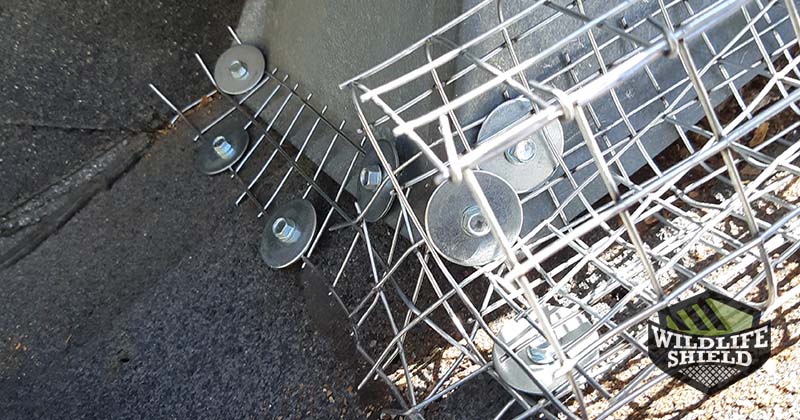


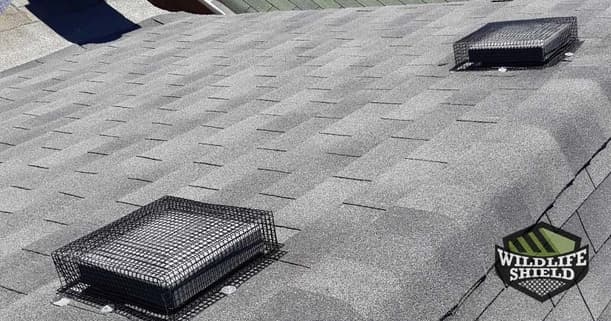
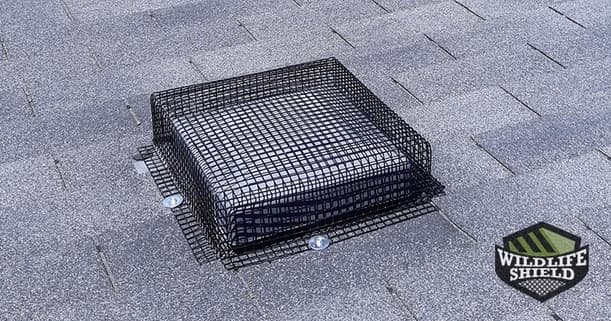

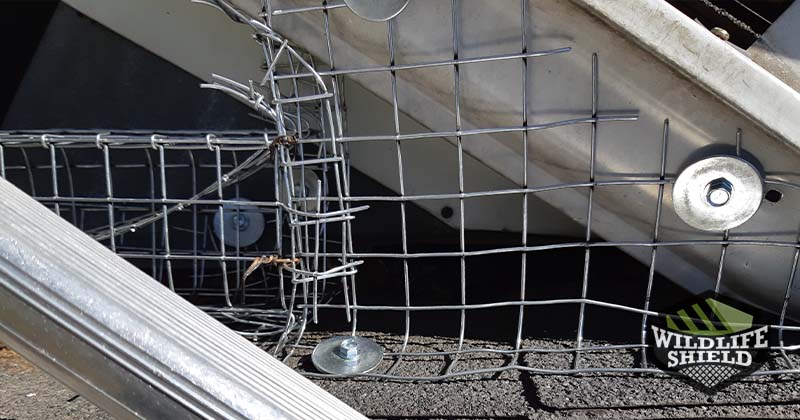
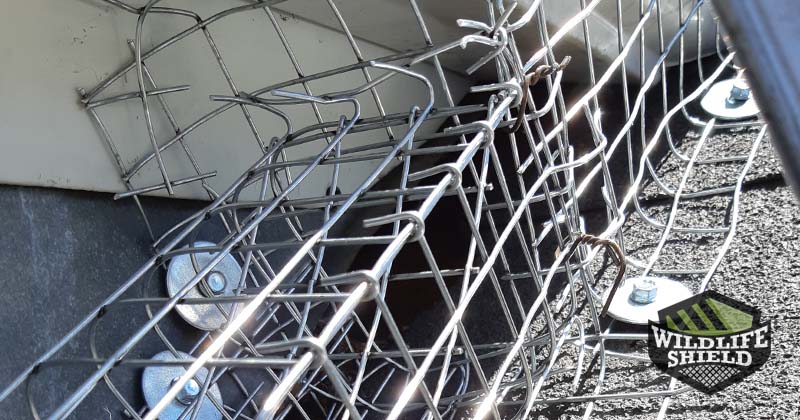
Conclusion
In conclusion, The animal was vacated from the attic and did not return. The one-way door was removed and the area was sealed. The customers were pleased with the results and have not had issues with wild animals in the attic since.
